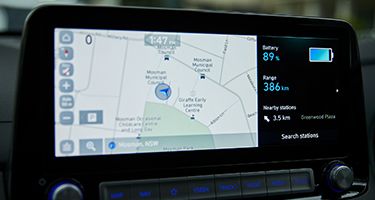Electric cars can provide a cost-effective and sustainable future for Australia. But range anxiety can be a deterrent for potential electric vehicle owners.
With Australia lagging behind in many technological advancements on the road, it’s time to explore how the country’s electric charging network is holding up.
To find out what’s happening around the country, we’ve broken down Australia’s electric vehicle charging network by state and put them up against the country's most popular road trips.
So if you’re considering heading into the electric vehicle market, check out our guide first.
Quick Stats
The number of EV charging stations in Australia has roughly doubled in the three years leading up to 2022. [1]
New South Wales has the most public EV chargers with 715 available as of December 2022. [1]
Popular road trips including the Savannah Way and Cairns to Cape York still can’t be driven by electric vehicles due to the lack of charging stations in the areas.
Types of EV Charging Stations in Australia
There are generally three different levels of EV chargers in Australia which provide varying amounts of range depending on the battery life of an electric car. [2]
Charging an electric car is relatively easy as most electric vehicles in Australia come with a plug type that's compatible with at least one of the different levels of charging.
However, Tesla provides an exclusive plug type and EV charging station that can only be used by Tesla vehicles.
Level 1/Mode 2
The level one charging station means electric car charging can happen at home using a standard power point. The 10 to 15 Amp, single-phase charger can be used with a specialised EV cable and can give around 10 to 20 km of range an hour.
As the slowest EV charging speed, it’ll be enough for a daily top up but it won’t be able to provide a full recharge overnight.
Level 2/Mode 3
At the next step up, a level two EV charging station uses a dedicated AC EV charger on a 32 Amp, three-phase charger.
A level two charging station is usually installed in places such as homes, apartment complexes, workplaces, shopping centres or hotels.
With up to 22 kW of power, level two chargers can add 40 to 100 km of range per hour, making it good for a daily top up as well as offering a full charge overnight.
Level 3/Mode 4
At the highest level, a level three DC charging station is installed at power levels from 25 kW to 350 kW.
The three-phase, 40 to 500 Amp EV chargers are usually installed in commercial areas and roadside locations for faster electric car charging.
Level three chargers can add up to 150 km of range an hour at its lowest level and at its highest, it can fully recharge an electric vehicle in 10 to 15 minutes.
As the fastest way of charging, these EV charging stations can be the most expensive for those looking to charge up.
Regular (AC) |
Fast (DC) |
Ultrafast (DC) |
Total |
|
|---|---|---|---|---|
ACT |
29 |
6 |
3 |
38 |
NSW |
566 |
112 |
37 |
715 |
NT |
52 |
2 |
0 |
54 |
QLD |
339 |
82 |
12 |
433 |
SA |
193 |
36 |
9 |
238 |
TAS |
95 |
23 |
6 |
124 |
VIC |
378 |
72 |
25 |
475 |
WA |
276 |
32 |
7 |
315 |
AUS |
1,928 |
365 |
99 |
2,392 |
With ongoing government incentives and schemes, the electric vehicle charging network is rapidly expanding across all states and territories.
In the three years leading up to 2022, the number of public EV charging points has roughly doubled across the country.
While this is a step in the right direction, there’s plenty of work to be done for states and territories to keep up with the number of electric cars on the roads.
Here’s the situation in each state and territory as of December 2022. [1]
Australian Capital Territory
In the ACT, there’s a total of 38 public charging stations including:
29 regular AC
6 fast DC
3 ultrafast DC
The ACT Government plans to deliver an additional 77 electric car charging stations across the territory in 2023 and aims to have at least 180 public chargers by 2025. [3]
New South Wales
In New South Wales, there’s a total of 715 public charging stations including:
566 regular AC
112 fast DC
37 ultrafast DC
New South Wales offers the most changing points of all states and territories with even more coming in the government’s ultrafast charging strategy.
The state government plans to eventually use ultrafast and fast charging stations at 100 km intervals across all major highways as well as every 5 km across Sydney to reduce range anxiety. [4]
Northern Territory
In the Northern Territory, there’s a total of 54 public charging stations including:
52 regular AC
2 fast DC
While the Northern Territory is the only place in Australia to have no ultrafast chargers, it also has the lowest number of electric vehicles across the territory. In December 2020, there were 38 registered electric vehicles in the Northern Territory. [5]
This means the Northern Territory has the highest ratio of chargers per electric vehicle with around 1.4 chargers per electric car.
Queensland
In Queensland, there’s a total of 433 public charging stations including:
339 regular AC
82 fast DC
12 ultrafast DC
As one of the most expansive states in the country, the Queensland Government has pushed forward with an electric ‘super highway’ project that plans to connect coastal and inland towns.
The project is set to install chargers in a number of western Queensland locations including popular driving routes such as Brisbane to Mt Isa, Longreach to Cairns and Goondiwindi to Emerald. [6]
South Australia
In South Australia, there’s a total of 238 public charging stations including:
193 regular AC
36 fast DC
9 ultrafast DC
By the end of 2024, the South Australian Government is expecting to have an additional 140 charging sites around the state, all of which are to be powered by renewable energy.
The additional sites will be made up of 86 AC charging stations and 54 fast and ultrafast DC charging stations across metropolitan, regional and rural locations. [7]
Tasmania
In Tasmania, there’s a total of 124 public charging stations including:
95 regular AC
23 fast DC
6 ultrafast DC
In February 2023, there were 1,694 registered electric vehicles in Tasmania. This means that with 124 public charging points available, there are just 0.07 chargers per electric vehicle. [8]
Victoria
In Victoria, there’s a total of 475 public charging stations including;
378 regular AC
72 fast DC
25 ultrafast DC
The Victorian Government is currently in the process of installing an additional 141 fast-charging stations across 116 high-use areas in regional and metropolitan Victoria.
There are currently projects in progress across the Port Phillip region, Hume, Gippsland and Barwon South West. [9]
Western Australia
In Western Australia, there’s a total of 315 public charging stations including:
276 regular AC
32 fast DC
7 ultrafast DC
The Western Australian Government has been working on developing Australia’s longest electric vehicle highway, the WA EV Network.
Once installations are finished, it plans to offer 98 charging points across 49 locations from Eucla at the South Australian border to Kunurra in the far north of the state. [10]
Australia’s Best Road Trips by EV
With all the work being done to improve the EV network across Australia, has this made it any easier to traverse Australia by electric vehicle?
To find out, we set out to plot routes for some of Australia’s most iconic road trips, taking into account the availability of chargers along the way using the website PlugShare to find charging locations.
We used an electric range of 480 km to find out if the average electric vehicle would be able to make it on the country’s best road trips.
| Doable? | Distance | Driving Time | Charging Points | Longest distance between stations | |
|---|---|---|---|---|---|
| Sydney to Melbourne | Yes | 1,216 km | 15.5 hrs | 95 | 117 km |
| Brisbane to Cairns | Yes | 1,699 km | 19.25 hrs | 72 | 201 km |
| Melbourne to Adelaide | Yes | 916 km | 11 hrs | 47 | 154 km |
| Perth to Broome | Yes | 2,619 km | 27 hrs | 30 | 332 km |
| Darwin to Uluru | Yes | 1,964 km | 19.5 hrs | 41 | 193 km |
| Cairns to Cape York | No | 1,030 km | 13.5 hrs | 14 | 783 km |
| The Savannah Way (Cairns to Broome) | No | 4,124 km | 47 hrs | 30 | 557 km |
| Red Centre (Alice Springs roundtrip) | Yes | 1,160 km | 12 hrs | 18 | 305 km |
| Explorer’s Way (Darwin to Adelaide) | Yes | 3,579 km | 36.25 hrs | 70 | 268 km |
Historical Comparisons
Australia’s electric charging network is growing year-on-year to provide more stability and less range anxiety for electric vehicle customers.
Most of the country’s progress has been made just in the past few years. In August 2020, there were 2,307 public chargers in Australia, which was already a 40% increase on the previous year. [11]
This number has now shot to just shy of 5,000 public charging points across the country in 2022. [1]
The number of locations where chargers have been installed has also increased from 1,376 sites across the country in 2020 to 2,392 in 2022. [1][11]
The electric charging network has grown large enough that rural road trip routes like the Red Centre in Northern Territory and Explorer’s Way over north Australia could now be taken by an electric vehicle with a range of 480 km.
Key Takeaways
The country’s electric vehicle market is growing, but there’s still plenty of work to be done.
While metropolitan areas are becoming dense with charging points, it’s regional and rural areas in Australia that state governments seem to now be focussing on.
Ongoing grants and schemes are often taking aim at improving infrastructure in remote areas such as Queensland’s Super Highway and the WA EV Network.
With so many plans for the future, EV drivers can likely expect to see the country's charging network continue to grow over the coming years.






